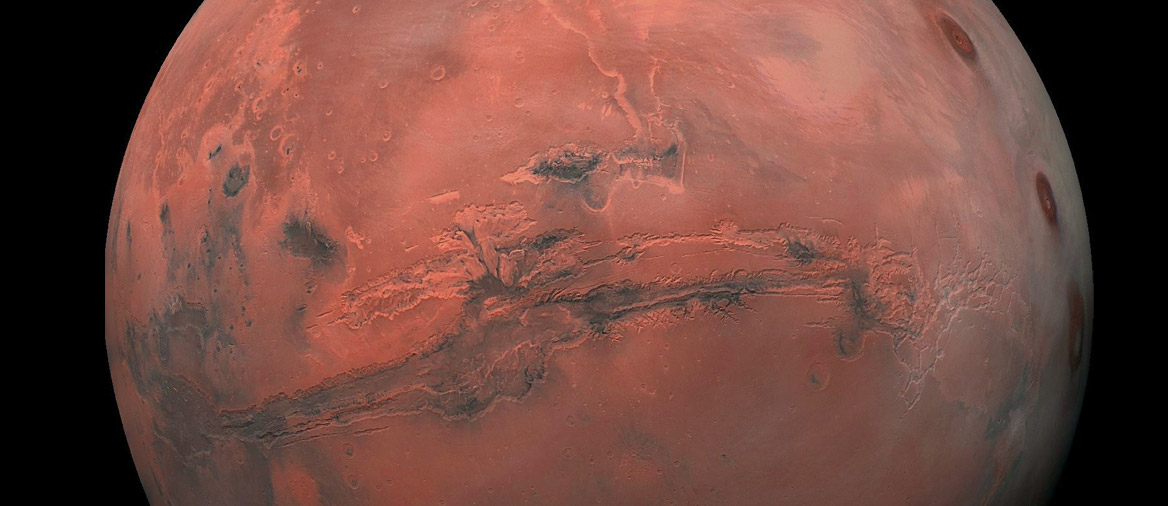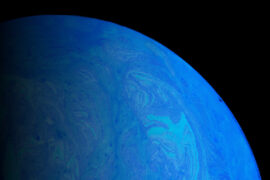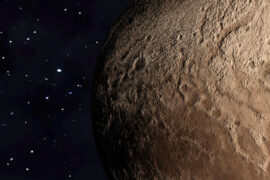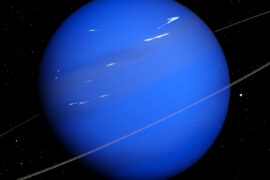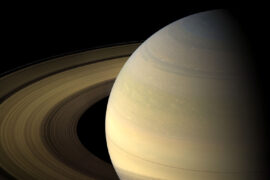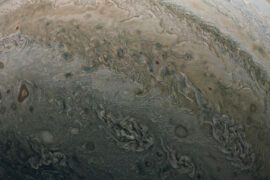There are two categories of targets to observe with a telescope. Planets and deep space objects (galaxies, nebulae, etc). You will be able to look at both with any decent telescope. However, some instruments are going to perform slightly better on certain objects.
If you are a beginner and your main objective is using a telescope for viewing planets there are a couple of features you must consider to optimize the experience and get the most bang for your buck.
This guide will help you understand everything you need to make the most informed decision.
It is important to note that when we talk about planetary viewing that also includes the Moon.
If you want to skip directly to the recommended picks, use the button below, or you can keep reading to understand the specifications of the instruments we are recommending and why we think they are optimal telescopes to see planets.
What aperture do you need to see the planets?
The aperture of a telescope is its most important specification. It refers to the size of the frontal lens of the mirror. This number is going to determine the amount of light that can be captured. The more light it gets, the more you can see. When it comes to aperture, bigger is always better.
To see the planets in the Solar system, a telescope with an aperture of 70mm or more is recommended. This will let you see a few details on Mars, Saturn’s rings and is enough to reach the farthest planets, Uranus and Neptune although you won’t get any detail out of them.
How did we reach that number?
Well, every object in the night sky has a certain brightness when seen from Earth. This is called apparent magnitude and it can be measured.
Likewise, every telescope, depending on its aperture and magnification can reach a certain limiting magnitude.
Here are the magnitudes for the planets in the Solar system.
| Planet | Apparent magnitude |
|---|---|
| Mercury | -2 |
| Venus | -5 |
| Mars | -3 |
| Jupiter | -3 |
| Saturn | 0 |
| Uranus | 5 |
| Neptune | 8 |
A basic beginner’s refractor telescope with a 70mm aperture and a 10mm eyepiece should be able to look at objects with a magnitude of 11. That is more than enough to reach Neptune.
However, one important thing to consider is that those numbers work only under good weather and light pollution conditions.
Light pollution is the effect city lights cause by illuminating the sky. It reduces the number of stars that you can see in the sky and it decreases the maximum magnitude a telescope can reach. This is the reason why observatories are built in remote areas away from everything.
This means that depending on your location, you have to leave some room as the magnitude of the objects you can expect to see with a telescope can be reduced by these factors.
After that 70mm aperture minimum, the higher you go, the more detail you can expect to see. For example, check out our post on what can you expect to see with 130mm telescopes so you can compare the difference.
If you want a detailed comparison of apertures vs the level of detail that you can expect from each of the planets in the Solar system, check out our guide on planets that you can see with a telescope.
What magnification do you need to see the planets?
As long as a telescope has an aperture of 70mm or more, the magnification is not going to determine whether or not you can see the planets. Magnification is only going to play a role in how much detail you are going to get out of the image and how much of the field of view is the planet going to take.
For planetary viewing using as much magnification as the telescope supports is possible because planets are close enough to Earth that we can see some details, geographical features, and richer colors. For example, using max magnification on Mars with a decent telescope will allow you to see its poles and the difference in color tonality of some of its regions.
To calculate the maximum magnification that a telescope can reach, try our magnification calculator. You will need to know the telescope’s focal length, which is also the next topic.
Focal length to see planets
Focal length is the distance the light travels in the telescope’s tube to get from the frontal mirror to the exit pupil. More information on our guide to focal length.
If you really want to optimize your planetary viewing experience, focus length is an important factor to consider. Long focal lengths perform slightly better than short ones when it comes to observing planets for a few reasons.
- With long focal lengths, it is easier to achieve an optimal focus.
- Long focal lengths generally result in less chromatic aberrations (color errors and colored rings around the objects)
- The smaller field of view (the area of the sky you see in the eyepiece) is better to help your eyes focus on a single object (the planet, moon, etc)
Some types of telescopes tend to have longer lengths thanks to their design. This gives them a small advantage to see planets. These are Cassegrain telescopes, Dobsonians, and some refractors.
Best telescopes to see planets
Best value – Celestron AstroMaster 70EQ
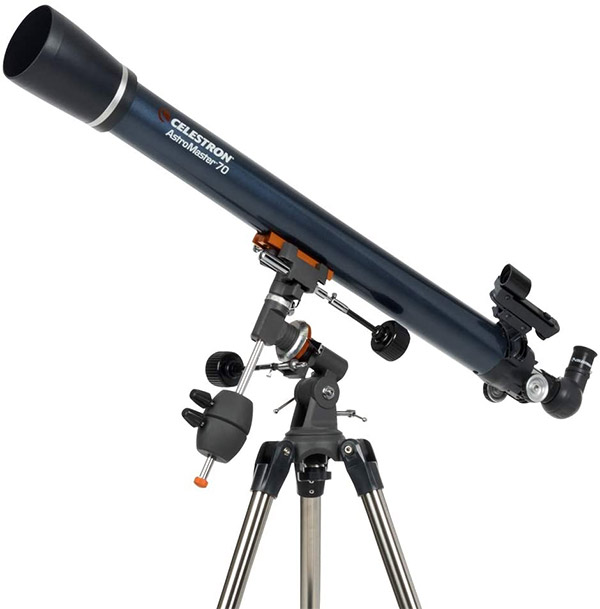
The best entry-level telescope on the market. Great price-to-value ratio with solid optics. Perfect choice for beginners and people looking for a good deal.
The AstroMaster 70mm is the definitive value telescope. It has an excellent price, solid build quality, and the optics are great for its size. I’ve compared it directly to many of the other entry-level/budget telescopes in the market from Chinese brands and you can tell the difference immediately. And the best part is it is in the same price range.
It is a telescope that will guide you through the initial stages of learning and will not hold you back as you gain more experience.
Being a refractor, it doesn’t require any maintenance or collimation. As long as you store it safely, it will last for many many years.
There are two versions of this telescope. One with an equatorial mount and one with an AZ. I’d recommend the EQ mount because even though it is slightly more difficult to use, it is more precise and better for tracking, which is important for planetary viewing. They are both the same price too.
There is also a 90mm version of the AstroMaster. If your budget allows for it and you want more power, it is also a great choice.
Best for beginners – Celestron StarSense Explorer LT 80AZ
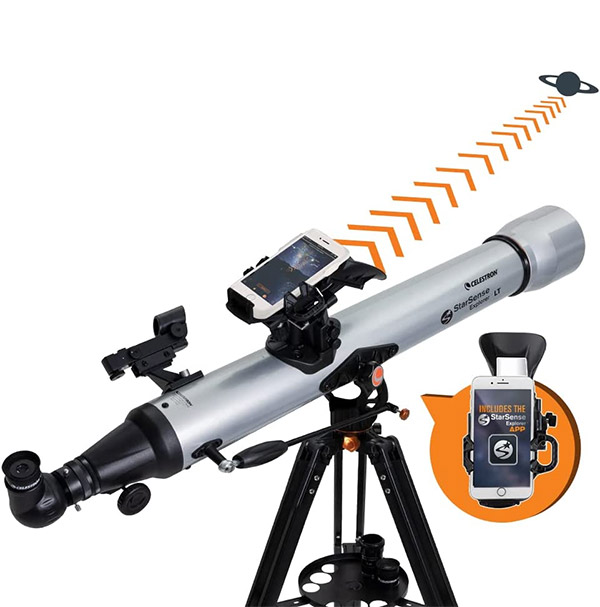
The StarSense technology helps first-timers to map the sky and find planets (and other object) easily and painlessly.
The StarSense Explorer technology is the definitive helper for anyone who is just getting started with astronomy. It removes all the pain of having to learn to locate and track objects through the sky which can be so frustrating for beginners who simply want to point the telescope and watch the pretty things in the sky.
It does this through a helper app and some magical sky recognition technology. Simply connect your smartphone to the telescope, fire up the app and it will automatically map the night sky for you for your particular location, time, and day. Then it will tell you about all the objects that are visible in the sky and guide you to point your telescope so you can see them.
The actual optics and body of the telescope are pretty much the same as those in the AstroMaster series (also recommended above) so you can expect a high-quality experience.
There are four telescopes that have the StarSense technology at the moment. 2 refractors and 2 Newtonians. We are recommending this because being a refractor it is slightly easier to use for beginners as it doesn’t require maintenance. If you want a higher aperture, go for the 114mm Newtonian instead of the 102mm refractor, not only because it is considerably cheaper but because it also has a longer focal length.
Best Overall – Celestron NexStar 127SLT
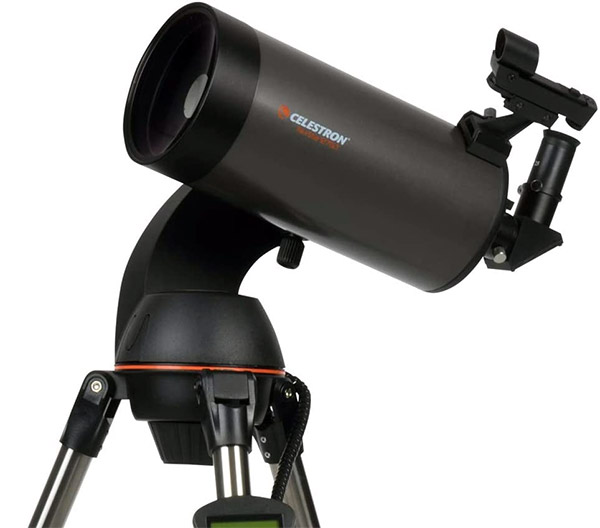
The NexStar 127SLT is a powerful compound telescope with high-quality optics, amazing build quality and the help of an integrated computer to find and track objects in the sky.
Just like the StarSense line, the NexStar telescopes also help in finding objects in the sky automatically with two big differences.
First, the NexStar does not need internet connectivity to work (although it does have internet connectivity to download updates). It’s all stored in the local database of the minicomputer that is within the mount. This makes it ideal to bring on stargazing trips to places where even cellular is unreliable.
Second, it can do all the targeting automatically. Just set your date and time. Align 3 bright objects in the sky so the SkyAlign technology can know your exact position and that’s it. Now you can look for any object in the database, press Enter in the remote, and the computer will automatically move the telescope and point it in the exact direction.
The controls of the NexStar take a bit getting used to and many experienced astronomers don’t like them as they are used to doing all the tracking and targeting manually. But if you are coming as a beginner, you will not have this muscle memory that you need to let go of and will have a much better experience.
There are multiple telescopes in the NexStar line, but we are choosing the 127SLT because it is a Maksutov-Cassegrain. This lets it have a very generous focal length of 1500mm. Its large aperture of 127mm also helps a lot in yielding great views.
The following video actually shows the 127SLT being pointed at the different planets of the Solar System. This should give you an idea of the views you can expect (although the camera work is a bit shaky).
Best portable – Celestron 70mm
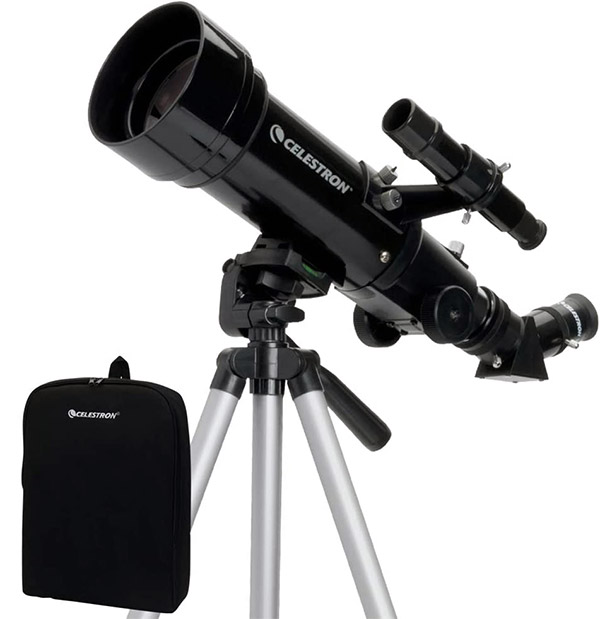
Lightweight, small telescope with solid optics for its size.
Choosing a portable telescope to bring on trips can be tricky because it is the only situation where weight and size are important considerations over aperture and focal length. As a result, you just have to make the decision between carrying a big case or sacrificing power and optics.
I chose this basic Celestron TravelScope because of its reliability and reasonable optics. It does have limitations in terms of power but it weighs just 4.2 pounds (1.9 kg) when fully assembled. That is so light that some people even bring it on hiking trips for nature watching.
It has an aperture of 70mm and a focal length of 400mm. But even with those specs, it should be able to reach a limiting magnitude of 11.7. If you are going to take it into the field it is also worth noting that you will generally get low light pollution which compensates a little bit and helps to get good views even with lower-powered scopes.
It comes with its own carrying case and the price is very affordable.
While I wouldn’t recommend it as your main telescope, it is a great choice as a secondary, portable device.
Summary
- A telescope with an aperture of 70mm and larger is enough to see all the planets in the Solar system.
- When it comes to viewing planets, you can go for as much magnification as your telescope allows for.
- A long focal length is slightly better for planetary viewing.

